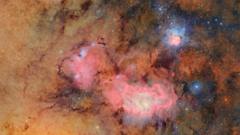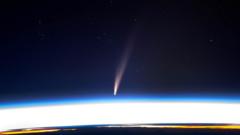Multiple independent studies have discredited earlier findings that indicated possible signs of life on K2-18b. The research highlights the complexities of observing distant exoplanets and the necessity for rigorous scrutiny in astronomical claims.
Exoplanet Life Theories Challenged: K2-18b's Urged Skepticism

Exoplanet Life Theories Challenged: K2-18b's Urged Skepticism
New analyses suggest that previous claims of potential life on K2-18b, an exoplanet 120 light-years away, are unfounded.
In April of this year, a team of astronomers stirred excitement when they reported potential signs of life on an exoplanet known as K2-18b, located over 120 light-years away from Earth. The notion of extraterrestrial life garnered significant attention, but it also invited rigorous examination from the scientific community.
Recent independent studies have now assessed the data that initially indicated the presence of a particular molecule in K2-18b's atmosphere, which was thought to hint at biological origins. However, all three analyses have ultimately concluded that there is no substantial evidence to support the existence of life on this distant planet. “The claim just absolutely vanishes,” remarked Luis Welbanks, an astronomer at Arizona State University and co-author of one of the studies.
The ongoing discourse around K2-18b emphasizes more the challenges faced in observing far-off celestial bodies than the search for alien life itself. While planets like Jupiter reflect enough sunlight to be seen with the naked eye, K2-18b is far too distant for even conventional telescopes to detect clearly.
To study such remote planets, astronomers have developed a variety of innovative methods. They can observe the gravitational effects of orbiting bodies or measure stellar wobble caused by their presence. A notable example is the 2010 observation of GJ 1214b, a planet located only 48 light-years away, where researchers detected water vapor in its atmosphere through light absorption techniques.
Advancements in technology, particularly with the James Webb Space Telescope launched in 2022, have allowed astronomers to analyze faint patterns in starlight to glean complex details about exoplanet atmospheres, further expanding our understanding of these distant worlds.






















